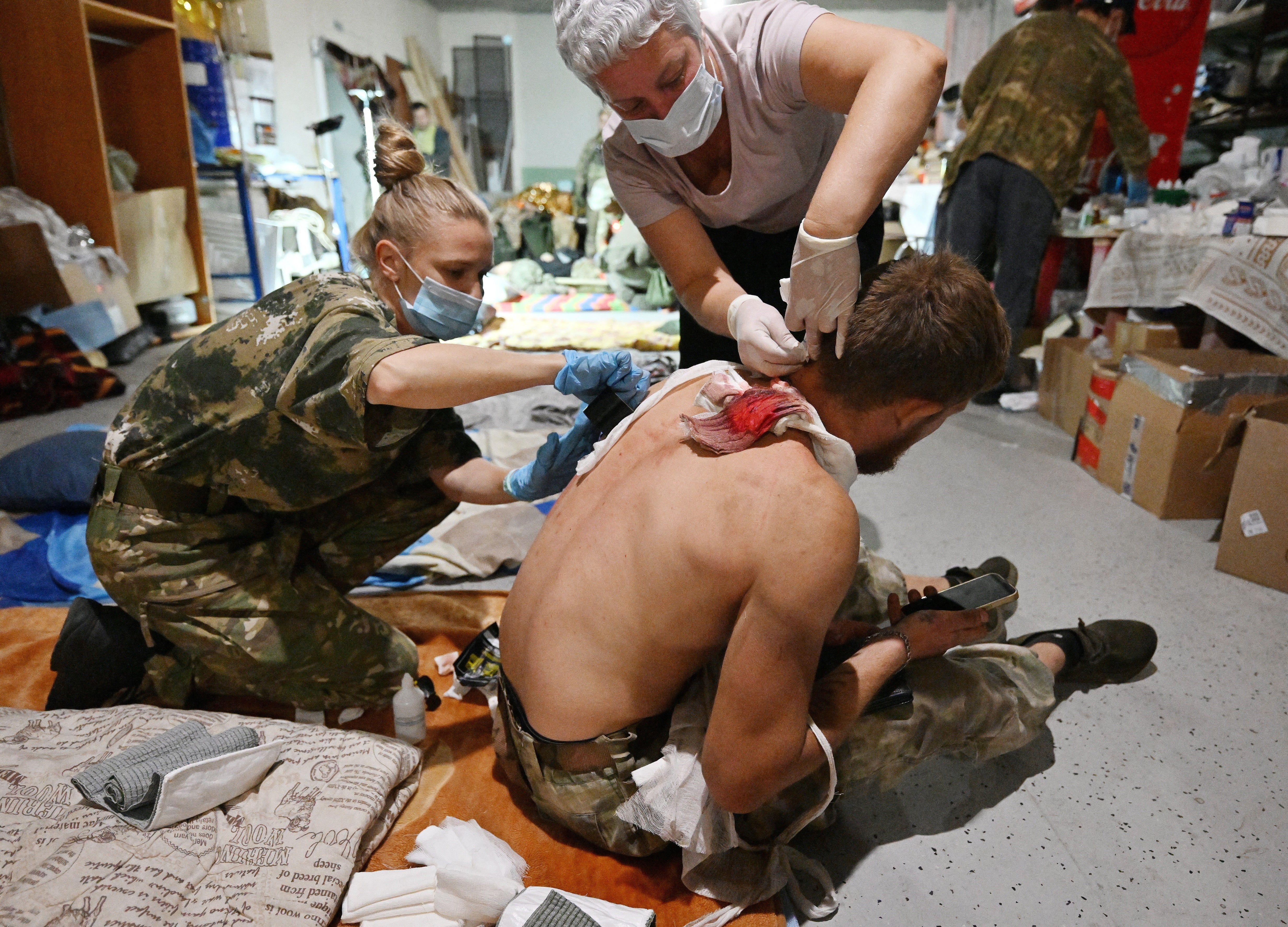Ukrainian forces are planning to press deeper into Russia as part of their incursion into Kursk, with thousands more ready to enter the fray, a senior Ukrainian colonel has told The Independent.
The colonel, who spoke on the condition of anonymity because he is not authorised to speak publicly, said they were planning to create a “buffer zone” in Russia, one that mirrors the area carved out of the nearby Ukrainian region of Kharkiv by Moscow’s troops in May.
He also argued that Ukrainians want to hold onto the territory they have taken for use as a bargaining chip in any future peace negotiations.
Some 8000 Ukrainian military personnel are already in Russia, he said, where the commander in chief of Kyiv’s forces General Oleksary Syrskyi claims his men hold around 400 square miles of land after launching the historic cross-border assault just over a week ago.
“Putin declared earlier this year that he wanted to create a grey zone open to the Ukrainian side of the frontier and he has been bombing the civilian population to create a buffer zone that is uninhabitable,” the colonel said.
“Well, we have plans to create a buffer zone also but on the Russian side of the border.”
He added: “This was a very carefully planned operation. A lot of intelligence was gathered about how many forces the Russians had in the area, exactly who they were, what their quality was, what they were armed with.”
The colonel also said flexibility is key in this operation and the Ukrainians “know they have to swiftly adapt to changes and new opportunities on the battlefield.”
Western analysts have estimated that Ukraine has seized around 300 square miles of Kursk, 75 per cent of what Gen Syrskyi has claimed, but even taking the lower approximation, the success of the attack is unprecedented.
What Ukraine has taken in just over a week is more than double what they retook during their three-month summer counteroffensive last year, according to estimates, and more than what Russia has taken in Ukraine this entire calendar year. That the incursion is into the Russian mainland, as opposed to occupied territory in Ukraine, is also significant.

While the Kremlin has, since the operation began on 6 August, several times falsely declared that its forces have repelled the Ukrainian attacks, Russian defence officials admitted their soldiers had been fighting Ukrainian forces close to Tolpino and Obshchy Kolodez, villages that are 20 miles inside Russia.
And Ukrainian president Volodymyr Zelensky says the military is still advancing a further “one to two kilometres” in various areas in the region.
The colonel did not discount that Ukrainian forces would attempt to attack the region’s capital, Kursk City, more than 50 miles from the border, and a nearby nuclear power plant.
One of the first Russian villages captured was Suzhda, home to a facility that controls Russian natural gas flowing to western Europe through a pipeline across Ukraine that, despite the war, is still intact and operating.
But he said Suzhda is also a railway hub and its station contains access to a communications system which tracks the movements of every train on Russian railways, their routes, timetables and what they are carrying. It cannot be isolated and switched off by Moscow and so, he said, Ukrainians were gleaning much valuable information from it.
He also claimed that “the Ukrainian forces have taken more than 2,000 prisoners”. “Most of them have given up without much of a fight,” he said. “They are conscripts with little training. They have also captured some Chechens.
“They were very scared and most ran away, leaving many of their weapons behind. Some of those captured had changed into civilian clothing.”
The Independent was not able to verify these claims, though images published on Wednesday showed a dozen or so Russian POWs in the back of a military truck in the Ukrainian Sumy region, having been captured from the neighbouring Kursk area under attack. Mr Zelensky has said that 100 POWs have been taken.
The colonel added that the attack has “lifted” morale among Ukraine’s troops, who for months have suffered high casualties and a slowly advancing Russia.
“The morale of the soldiers has been lifted,” he said. “After months of trench warfare that felt static, although there were always high casualties, and where they felt they didn’t have enough weapons, lacked the ammunition and the numbers, and despite all their efforts the Russians were gaining 10 metres one day, 100 metres another, now they feel we are on the move.
“You can see they are proud and are walking around with a new swagger.”
Tom Watling contributed to this report.

